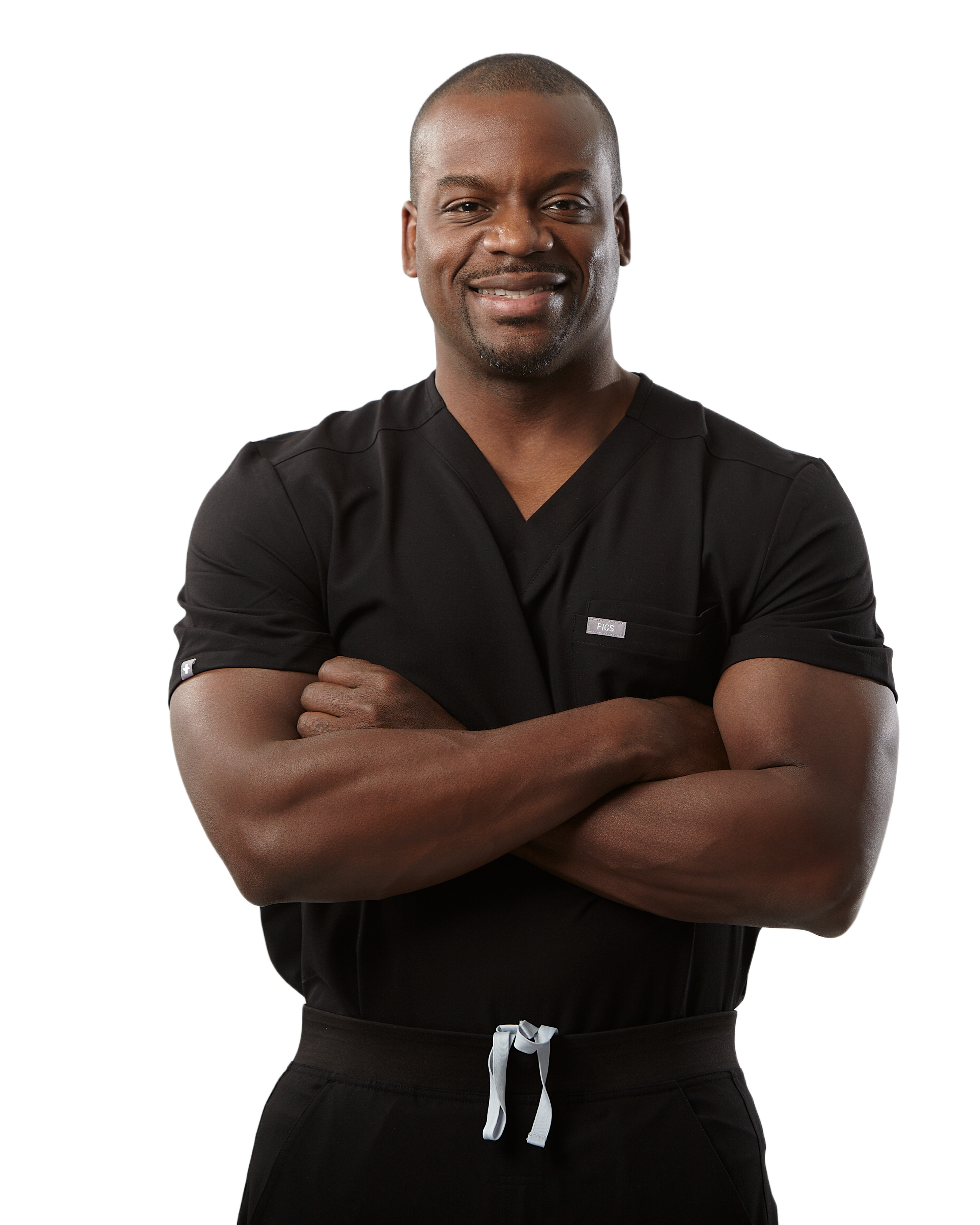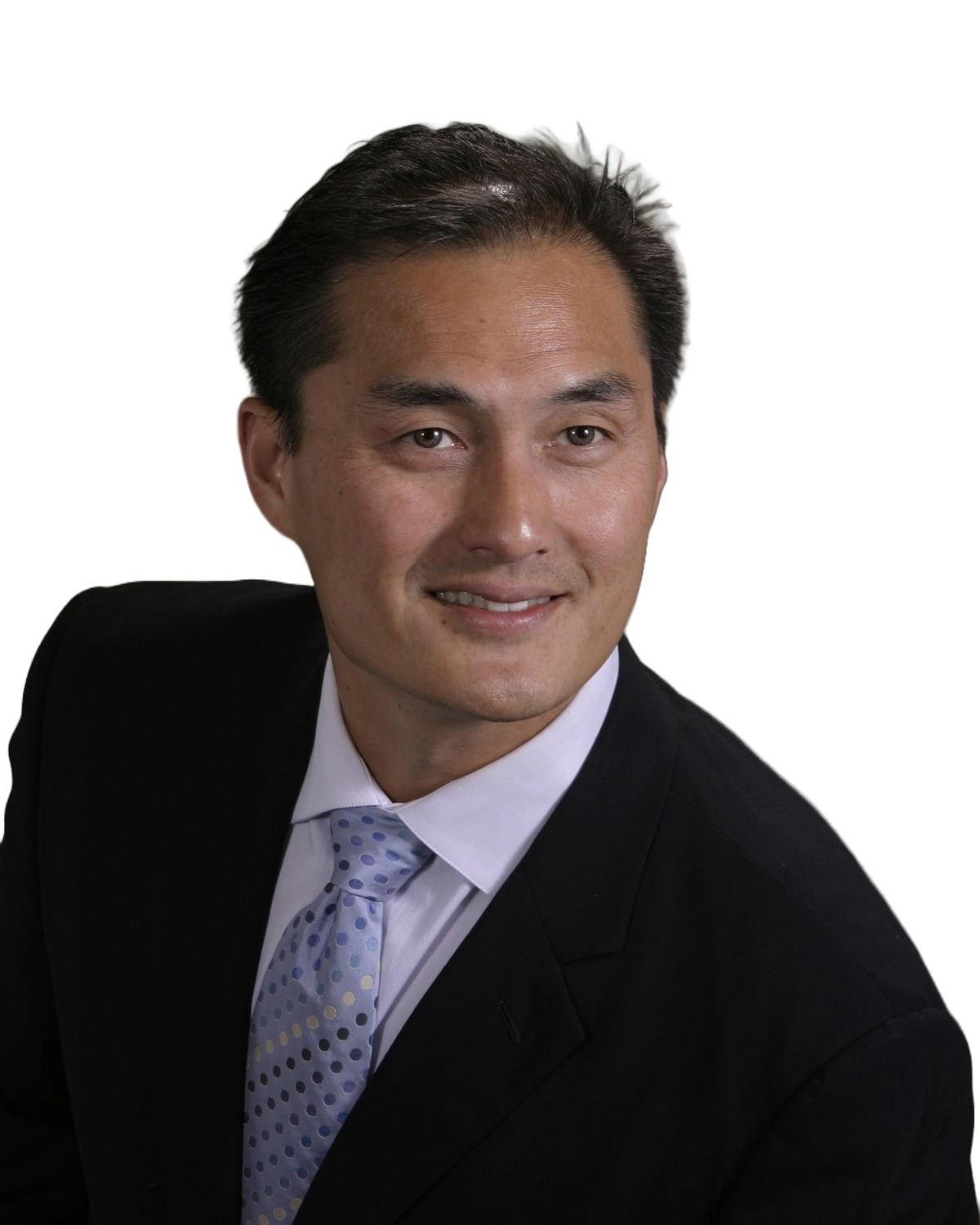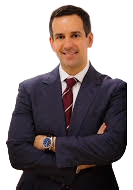SPINAL SURGERY
JOHN SHIAU MD
GBOLAHAN O. OKUBADEJO, MD
ARON ROVNER, MD
Co-Surgeons-In-Chief
John Shiau, MD
Board Certified Neurosurgeon
John Shiau, MD, a nationally renowned and respected Board-Certified Neurosurgeon, has made significant contributions to the advancement of Minimally Invasive Spine Surgery throughout his career spanning over three decades. With his extensive neurosurgical experience, he has earned a growing reputation and recognition as a leader in the field of minimally invasive neurosurgery. Dr. Shiau takes great pride in delivering the highest level of minimally invasive neurosurgical care to his patients.
Dr. John Shiau's early accomplishments include gaining early admission to Harvard Medical School, The Juilliard School of Music, and ultimately, his alma mater, The University of Michigan. In 1983, he was selected as one of only ten students nationwide to participate in the University of Michigan's Seven Year Medical Program.
Following his graduation from the Mount Sinai Residency Program in 1997, Dr. Shiau pursued further training in Mainz, Germany, where he completed a fellowship focused on Minimally Invasive and Endoscopic Neurosurgical Techniques at Johannes Gutenberg University Hospital.
Dr. Shiau's patient base extends across the United States, with individuals traveling from various regions to seek his expertise. He concentrates on minimally invasive surgical interventions for a wide range of spine and nerve-related conditions, with a particular emphasis on outpatient surgery.
Dr. John Shiau embodies the essential qualities that have propelled the Minimally Invasive Spine revolution forward, all while practicing with humility and placing his patients' best interests at the forefront.
**Education & Training**
- Bachelor of Science, University of Michigan (1986)
- Doctor of Medicine, University of Michigan (1990)
- Internship & Residency, Mount Sinai Medical Center (1997)
- Fellowship in Minimally Invasive and Endoscopic Neurosurgical Technique, Johannes Gutenberg University Hospital (1997)
**Credentials**
- Diplomat, Board Certified: American Board of Neurological Surgery (2004)
- Fellow of the American College of Surgeons (2005)
Gbolahan Okubadejo, MD
Board Certified Orthopedic Surgery
Fellowship Trained, Spinal Surgery
Dr. Okubadejo is a board certified, fellowship-trained spine surgeon with comprehensive experience in performing numerous spinal surgical procedures in the treatment of cervical, lumbar and thoracic conditions. He is extremely adept in dealing with degenerative spinal disease, deformity and all other pathologies of the spine. He has presented at major spine conferences around the world and been published in various journals including the prestigious Journal of Bone and Joint Surgery. He was awarded the Leonard Marmor Award for presenting the best research project during his residency training.
Dr. Okubadejo places a strong emphasis on minimally invasive techniques for a majority of his surgical procedures, as well as communication with patients and providing individualized patient care.
Dr. Okubadejo will only see patients for the SPINE.
Hospital Affiliations:
- Lenox Hill Hospital, New York, NY
- Hudson Regional Medical Center, Secaucus, NJ
- Holy Name Hospital, Teaneck, NJ
- Jersey City Medical Center, Jersey City, NJ
- Englewood Hospital, Englewood, NJ
Aron Rovner, MD
Board Certified Orthopedic Surgery
Fellowship Trained, Spinal Surgery
Aron D. Rovner, MD, is a highly respected orthopedic surgeon serving New Jersey and the greater New York area at New York Spine and Sports Surgery. Patients come from all over the world to seek treatment at his two locations in Garden City, New York, and Fair Lawn, New Jersey.
After graduating from Rutgers University with a bachelor’s degree in biological science and economics, Dr. Rovner earned his medical degree from the State University of New York Health Science Center at Brooklyn. He went on to complete an internship and residency in orthopedic surgery at Montefiore Medical Center at the Albert Einstein College of Medicine in the Bronx and an adult and pediatric spine surgery fellowship at Baylor College of Medicine in Houston.
As a board-certified orthopedic surgeon with a specialty in adult and pediatric spinal surgery, Dr. Rovner has undergone extensive training in advanced procedures such as cervical fusion, microdiscectomy, and balloon kyphoplasty. He’s also one of the only surgeons qualified to perform coccygectomy or surgical removal of the tailbone.
Even with his high level of training, Dr. Rovner is committed to ongoing education. He stays on the leading edge of innovations in orthopedic medicine and spinal surgery. In addition to attending classes and symposiums, Dr. Rovner has been honored to present lectures for esteemed organizations such as the American Academy of Orthopaedic Surgeons and the North American Spine Society.
Dr. Rovner has been named one of America’s Top Orthopedists by the Consumers’ Research Council of America and has received the Patient’s Choice Award several years in a row. He serves as president of New York Spine and Sports Surgery and is a diplomate of the National Board of Medical Examiners.
Anterior Cervical Discectomy and Fusion
Anterior cervical discectomy and fusion (ACDF) is a surgical procedure used to alleviate pain, weakness, numbness, and tingling caused by pressure on the spinal cord or nerve root in the neck. The procedure involves the removal of a damaged disc in the cervical spine, which can be approached through the front of the neck. This form of surgical decompression is also known as anterior cervical decompression. The symptoms of cervical radiculopathy, such as pain, tingling, numbness, and weakness, may appear intermittently or develop gradually, and they can radiate into the shoulder, arm, and/or hand.
The surgery involves two parts: anterior cervical discectomy and fusion. During the discectomy, the damaged disc is removed from between two vertebral bones, and a fusion surgery is performed simultaneously to stabilize the cervical segment. This involves placing bone graft and/or implants in the area where the disc was removed to provide strength and stability. ACDF is commonly used to treat symptomatic cervical herniated disc, cervical degenerative disc disease, bone spurs caused by arthritis, and cervical spinal stenosis.
The anterior approach used in ACDF surgery offers direct access to the cervical discs and allows for direct visualization of the spine. This can result in direct nerve and spinal cord decompression, which can help alleviate symptoms. The anterior approach can access almost the entire cervical spine, from the top of the neck down to the point where the cervical spine meets the upper spine. Additionally, the anterior approach is associated with less postoperative pain than a posterior operation.
Cervical Fracture
he cervical vertebrae refer to the seven bones in the neck that function to support the head and connect it to the shoulders and body. When one of these vertebrae suffers a fracture or break, it is typically known as a broken neck.
Cervical fractures are usually the result of high-energy trauma, such as falls or automobile crashes, and athletes are particularly at risk. A fracture can occur when a football player "spears" an opponent with their head, when an ice hockey player is hit from behind and slams into the boards, when a gymnast falls while performing a release move, or when a diver hits the bottom of a shallow pool.
Injuries to the vertebrae can have serious consequences since the spinal cord runs through the center of the vertebrae, serving as the central nervous system's connection between the brain and the body. Damage to the spinal cord can cause paralysis or even death. Injuries to the spinal cord at the level of the cervical spine can result in temporary or permanent paralysis of the entire body from the neck down.
The type of treatment for a cervical fracture will depend on which of the seven cervical vertebrae are damaged and the extent of the fracture. A minor compression fracture can be treated with a cervical brace worn for 6 to 8 weeks until the bone heals. A more complex or extensive fracture may require traction, surgery, 2 to 3 months in a rigid cast, or a combination of these treatments.
Cervical Radiculopathy
Cervical radiculopathy refers to pain and other neurological symptoms that result from irritation of a nerve in the neck. Cervical nerves branch out to muscles that enable shoulder, arm, hand, and finger movement, as well as to skin for sensory function.
Symptoms of cervical radiculopathy can include pain, tingling, numbness, or weakness along a nerve's pathway in the shoulder, arm, and/or hand. The causes of this condition include cervical herniated discs, cervical spinal stenosis, and cervical degenerative disc disease.
Treatment options for cervical radiculopathy depend on the underlying cause and the severity of symptoms. Nonsurgical treatments such as rest, physical therapy, ice and/or heat therapy, pain management with medication or injections, and manual manipulation may be tried first. If symptoms do not improve after 6 to 12 weeks of nonsurgical treatment, surgery may be considered. Many people find that a combination of treatments provides the most effective relief for cervical radiculopathy.
Disc Replacement
The possibility of replacing worn-out discs in the lower back and neck with artificial discs, which are in varying stages of FDA approval in the USA. European surgeons have successfully implanted these artificial discs for several years, but testing is still ongoing in the US. Disc replacement surgery may be a viable option for individuals experiencing localized pain in one or two degenerated or herniated discs, as well as younger patients who prefer to maintain the range of motion of their spine. Traditional disc removal and fusion surgery has had a success rate greater than 90%, but concerns have been raised about accelerating the development of a disc problem at another level. Disc replacement surgery may slow down or prevent the development of another problem. The surgical procedure involves careful removal of most of the disc, followed by the placement of an artificial disc replacement prosthesis made of a combination of metal and very hard plastic. However, not everyone is a suitable candidate for disc replacement surgery, and conditions like osteoporosis and severe arthritis may produce poor results. For more information on this procedure, you can visit UnderstandSpineSurgery.com.
Minimally Invasive Spine Surgery (MIS)
Minimally Invasive Spine Surgery (MIS) refers to a range of surgical techniques that involve making smaller incisions and minimizing tissue damage. In spinal surgery, MIS is performed using specially designed instruments that enable the surgeon to see a larger area beneath the small incision. The field of MIS is growing, with newer techniques including endoscopic procedures and fusing two vertebrae together. The potential benefits of MIS may include smaller scars and less damage to surrounding tissues, which could result in reduced pain and blood loss. However, there is not enough data to show whether MIS provides short- and long-term benefits over traditional spine surgery. Not everyone is a suitable candidate for MIS, and factors like age, weight, lifestyle, and medical conditions must be considered. To prepare for surgery, patients may need to undergo various tests and stop taking certain medications. After the operation, patients may experience pain and will need to follow rehabilitation guidelines. Patients should consult their spine surgeon for more information.
Spinal Cord Stimulator Implantation
he process of implanting a spinal cord stimulator involves two procedures: the trial and the implantation.
First, the trial period involves the temporary implantation of a device to test its effectiveness in reducing pain. The electrodes are carefully inserted in the epidural space of the spine, guided by fluoroscopy X-rays. The trial usually requires one incision and the generator is worn externally. The success of the trial is determined by a 50% or greater reduction in pain. If the trial is unsuccessful, the wires can be easily removed. If successful, the implantation procedure is scheduled.
The implantation procedure involves the permanent placement of the device, where the generator is placed underneath the skin and the trial electrodes are replaced with sterile electrodes anchored by sutures to minimize movement. The procedure takes about 1-2 hours and is typically performed on an outpatient basis. Once the electrodes and generator are connected and running, the incisions are closed.
During the recovery period, incisions may be painful for several days, and patients are advised to avoid stretching, twisting, or reaching. Dressings are placed over the incision sites, which can be removed after about 3 days. Patients are typically advised to limit activity for 2 weeks after surgery. Complications from spinal cord stimulator surgery are rare but can include infection, bleeding, device migration, device damage, dural puncture, and spinal cord trauma.
Patients with a spinal cord stimulator are advised to be mindful of restrictions, including avoiding MRIs and turning off the device when passing through airport security or driving heavy machinery. Swimming is generally fine with a permanent, implanted generator, but not with a temporary device. The device can be removed safely if it does not provide satisfactory pain relief or if there is an infection or mechanical problem.









